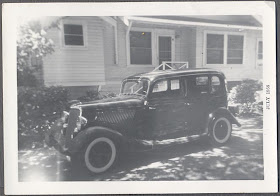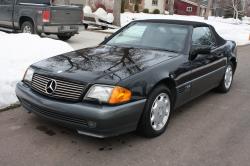Kristin Cella
HST 344
Professor Heitmann
23 January 2013
Crash
I went to a small
high school in Elgin, Illinois. It could take anywhere between ten to twenty
minutes to get there from my house, the reason being that there is a train
station right by the school where there would constantly be cargo and passenger
trains coming through. I always hated having to wait at the light for what
seemed like forever because of the trains, but one day in particular made me despise
it.
I was fifteen
years old when my older sister was driving me and our two friends home from our
after school field hockey practice. It was just like any other day. We were all
talking, listening to the radio, messing with our cell phones, nothing was different.
Like most other days, we just barely missed the light so my sister slowly brought
her ‘97 Chevy Malibu to a stop right behind the tracks. Our windows were down
and I could clearly hear the railroad crossing warning bells. All of a sudden I
can’t hear them anymore. It sounded like loud thunder and a long gun shot, and
pieces of glass fly everywhere over the road. A grey minivan on the other side
of the track took a hard and fast right from the road perpendicular to us. The
train hit it with immense force, and it continued to drag it along the tracks
like a little boy’s hand steering his toy on the floor. Red warning lights
continued to flash as they had started just seconds before.
We all witnessed
the whole thing. We couldn’t help but to scream and burst into panic mode. Of
course we couldn’t have done anything to prevent it, nor could the train. It
blew its whistle just like all trains do when approaching a crossway. The
minivan drove over the tracks at the exact moment the train would strike it
from the side, and we all knew that lives had just ended. I couldn’t process
anything because I was in such a state of shock. I’d never even witnessed a
fender bender before this, and I sure as hell had never seen anyone been
killed, but it just didn’t seem plausible that anyone could survive a crash
like that.
A few people were
out of their cars at this point, and my sister frantically grabbed her phone to
dial 911. Her voice was shaking as she told them what we just witnessed. I looked
around and saw other people on their phones doing the same. Soon after, police
cars and an ambulance showed up. I couldn’t stop looking around at all the
glass and replaying what I just saw in my head. Weren’t the crossing gates down?
How did the driver not hear the train’s loud whistle? Could it have been a
suicide attempt? We were all trying to make sense of it all. When our time came
to cross, we turned right and drove parallel to the tracks. I started seeing
more and more car parts sprinkled across the area and then finally the
compacted minivan. The four of us barely talked for the rest of the ride home.
The grey minivan
had five people in it. The driver was an adult female and the only one who
miraculously survived. The passenger was her sister, and in the back were her
two nieces and baby nephew. My sister, myself, and our two friends didn’t talk
to each other for days because we were so shaken up, but we were eventually
contacted by the police to explain what we witnessed. I hated having to relive
the horrific incident; especially because it all happened so fast I wasn’t 100%
sure about any of the little details anymore. Yet, seven years later I can
still hear the noise of that grey minivan being pulverized and can see it happening
in my head.
There weren’t many
days throughout the rest of my high school career where I didn’t think about
the accident when waiting at that light. To say that I now look both ways when
I approach a railroad crossing would be an understatement.
Not this particular accident but a train-mini-van accident nevertheless.(editor)





















































